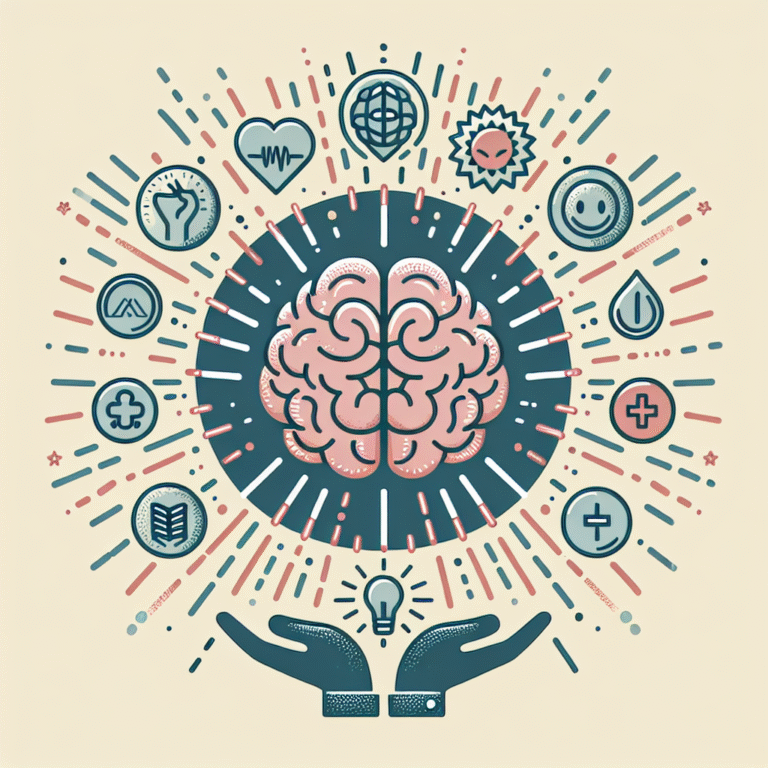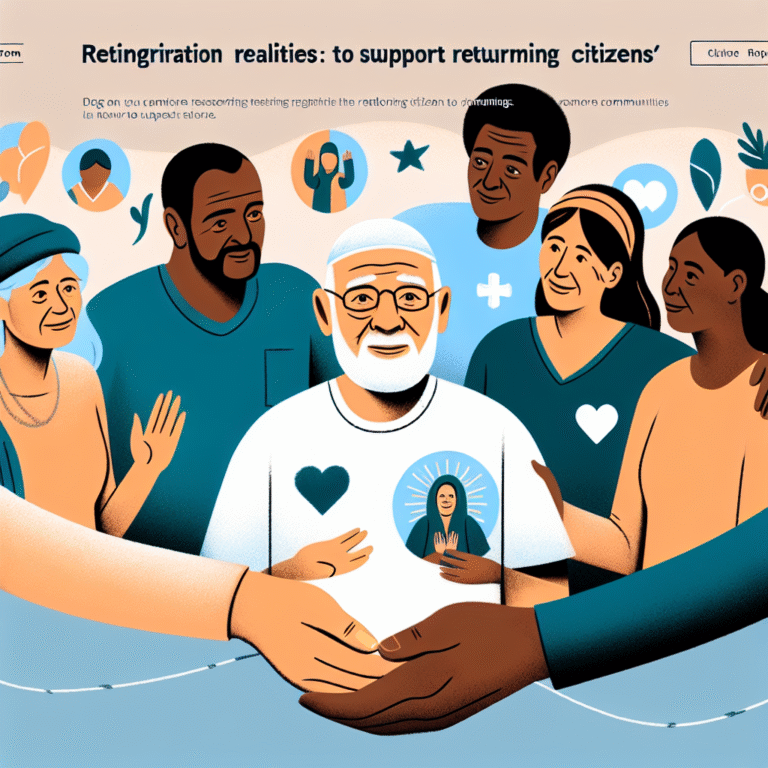
Introduction
Imagine waking up one day and struggling to recognize your loved ones or to recall your favorite memories. Cognitive impairments, whether due to trauma, stroke, or neurological diseases, can redefine our lives in agonizing ways. Fortunately, cognitive rehabilitation emerges as a beacon of hope, providing structured strategies to reclaim lost cognitive skills and, in essence, bridging the gap between loss and recovery. This article delves deep into the significance and practicality of cognitive rehabilitation, offering insights, case studies, and actionable strategies designed to reinvigorate the mind.
Understanding Cognitive Rehabilitation
What Is Cognitive Rehabilitation?
Cognitive rehabilitation is a therapeutic approach designed to help individuals regain lost cognitive functions or adapt to cognitive deficits. This process typically involves restoring or compensating for skills and the use of strategies that enhance cognitive performance. Whether the issue arises from traumatic brain injury (TBI), stroke, or neurodegenerative disorders, cognitive rehabilitation plays a crucial role in the recovery journey.
Why Is It Important?
Considering that cognitive functions like memory, attention, and problem-solving are vital in daily life, the ramifications of cognitive deficits can be profound. The importance of cognitive rehabilitation can’t be overstated; it not only aids in recovery but also empowers individuals, allowing them to regain autonomy and improve their quality of life. Specifically, cognitive rehabilitation: bridging the gap between loss and recovery enhances emotional well-being and social engagement, fostering a holistic approach to recovery.
Key Components of Cognitive Rehabilitation
Assessment of Cognitive Functioning
The first step in cognitive rehabilitation involves a comprehensive assessment to identify areas of deficit. This typically includes:
- Standardized tests for memory, attention, and executive function.
- Behavioral assessments to understand the individual’s daily challenges.
Personalized Rehabilitation Plans
Every journey is unique. Based on assessment results, therapists create a tailored plan that may involve:
- Cognitive exercises: Targeted tasks designed to improve specific skills.
- Skill acquisition: Techniques for learning new strategies to cope with deficits.
- Environmental modifications: Adjustments to the living space that promote independence.
Techniques and Strategies
Cognitive rehabilitation is built on various techniques, including:
- Metacognitive strategies: Teaching individuals to think about their thinking, enhancing awareness of cognitive processes.
- Memory aids: Utilizing tools such as calendars and reminders to assist with memory deficits.
- Mindfulness and relaxation exercises: Helping to reduce anxiety and improve focus.
Case Studies: Real-World Applications
Case Study 1: The Journey of Nancy
Background: Nancy, a 58-year-old woman, suffered a stroke that left her with significant memory loss.
Intervention: Through cognitive rehabilitation, Nancy engaged in targeted memory exercises and utilized digital reminders. The rehabilitation plan included both individual and group therapy sessions to build cognitive skills and social connections.
Outcome: After six months, Nancy regained her ability to engage in conversations and manage her daily tasks. Her journey exemplifies cognitive rehabilitation: bridging the gap between loss and recovery, showcasing how tailored interventions can lead to significant improvements.
Case Study 2: John’s Traumatic Brain Injury
Background: John was involved in a motorcycle accident that resulted in a traumatic brain injury, impacting his attention and executive function.
Intervention: John underwent a comprehensive rehabilitation program, which emphasized cognitive exercises designed to enhance attention. He also worked on goal-setting strategies to improve his daily planning abilities.
Outcome: Within four months, John reported increased concentration and the ability to return to work part-time. His success underscores the vital role of cognitive rehabilitation in the recovery process.
Table: Key Elements of Successful Rehabilitation
| Component | Nancy’s Case | John’s Case |
|---|---|---|
| Assessment | Memory tests | Attention and executive function tests |
| Key Interventions | Memory exercises, social therapy | Attention-enhancing exercises, goal setting |
| Outcome | Improved communication skills | Returned to work part-time |
The Role of Technology in Cognitive Rehabilitation
In recent years, technology has revolutionized cognitive rehabilitation. Many applications are designed to enhance cognitive skills through engaging exercises. These platforms often provide personalized feedback, which can significantly boost the healing process.
Teletherapy: Bridging Distances
Teletherapy has made cognitive rehabilitation accessible to a broader audience. Patients can engage in therapy sessions from the comfort of their homes, reducing barriers to access. This flexibility is especially beneficial for individuals in rural areas or those with mobility challenges.
Cognitive Training Apps
Various apps focus specifically on improving cognitive functions. For instance, platforms like Lumosity or BrainHQ provide exercises tailored to various cognitive skills, from memory to problem-solving. These aids can complement traditional rehabilitation methods, allowing individuals to practice independently.
Challenges in Cognitive Rehabilitation
Emotional and Psychological Factors
Recovering from cognitive impairments doesn’t only involve regaining cognitive skills; emotional well-being is crucial. Many individuals face frustration, depression, or anxiety during the rehabilitation process. Addressing these psychological barriers is essential for effective recovery.
Resource Access
Access to qualified professionals and rehabilitation facilities can pose challenges for some individuals. Inadequate resources can hinder progress and create a disparity in treatment effectiveness.
Stigma
Cognitive impairments come with societal stigma, which can lead to isolation and reduced motivation. It is crucial to foster awareness and understanding to combat misconceptions around cognitive disorders.
Practical Strategies for Success
-
Set Realistic Goals: Collaborate with professionals to establish achievable milestones during rehabilitation. Celebrate every small victory in the path of cognitive rehabilitation: bridging the gap between loss and recovery.
-
Embrace a Support Network: Engage with family, friends, and support groups to share experiences and build resilience.
-
Stay Consistent: Regular practice of cognitive exercises is vital. Daily engagement, even in small doses, can yield significant benefits over time.
-
Educate Yourself: Understanding cognitive deficits can empower individuals and caregivers. Awareness is key to developing effective strategies for tackling challenges.
- Manage Stress: Techniques such as mindfulness and breathing exercises can reduce anxiety and improve focus during rehabilitation sessions.
Conclusion
The journey of cognitive rehabilitation is not merely about restoring lost functions but about rebuilding lives. It integrates emotional healing, skill development, and empowerment, ultimately guiding individuals through their recovery journeys. Cognitive rehabilitation: bridging the gap between loss and recovery exemplifies resilience, adaptability, and hope. Individuals experiencing cognitive impairments should embrace this opportunity for growth and healing, knowing that support and strategies are available to reclaim their lives.
FAQs
1. What type of professionals handle cognitive rehabilitation?
Cognitive rehabilitation is typically conducted by a team including neuropsychologists, occupational therapists, and speech-language pathologists.
2. How long does cognitive rehabilitation take?
The duration varies significantly depending on the individual’s condition, goals, and commitment to therapy. Some may see improvements in a few weeks, while others require months or even years.
3. Is cognitive rehabilitation only for the elderly?
No, cognitive rehabilitation can benefit individuals of all ages who experience cognitive impairments due to injury or illness, including children and young adults.
4. Can cognitive rehabilitation be done at home?
Absolutely! Many components of cognitive rehabilitation can be achieved at home, especially with the aid of designed exercises and digital applications.
5. What is the success rate of cognitive rehabilitation?
Success rates can vary widely depending on individual circumstances, the nature of cognitive deficits, and the interventions employed. With commitment and proper support, many individuals experience significant improvements.
This in-depth examination of cognitive rehabilitation highlights its importance and potential to redefine lives affected by cognitive impairments. It’s a journey worth taking—one of recovery, resilience, and ultimately, rediscovery of self.


















